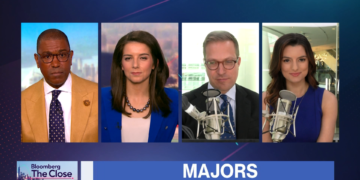Last week, the International Trade Court in New York overturned some of Donald Trump’s tariffs. This decision was itself suspended a few hours later by a federal appeals court in Washington. This has opened up a new front in the tariff war. Meanwhile, the executive branch is standing firm and still has several legal options at its disposal.
A new battle is beginning in the tariff war. This time, the Trump administration is up against the courts. Last week, the US International Trade Court overturned some of the tariffs imposed by Donald Trump: the “reciprocal tariffs” of April 2 and the 25% tariffs on Mexico, Canada, and China.
On Wednesday 28 May, a panel of three ITC judges ruled that the International Emergency Economic Powers Act (IEEPA) of 1977, invoked by Donald Trump, did not allow him to impose these sanctions: “The court does not interpret the IEEPA as conferring such unlimited authority and vacates the challenged duties imposed pursuant to it.” The court had been asked to rule on the matter by five companies that felt they had been harmed and by twelve states led by Oregon.
The IEEPA (International Emergency Economic Powers Act) of 1977 allows the president to take measures to combat an “unusual and extraordinary threat.” Thus, in the executive order signed on April 2 by Donald Trump, it is written: “The significant and persistent annual trade deficits of the United States constitute an unusual and extraordinary threat to the national security and economy of the United States. […] I hereby declare a national emergency in response to this threat.”
The judges believe that a trade deficit that has existed for almost 50 years cannot be considered an “unusual and extraordinary threat.”
However, on Thursday, May 29, a federal appeals court in Washington suspended this decision on an emergency basis. The appeals court must now examine the merits of the case. Ultimately, it may be up to the Supreme Court to decide. The process will therefore take several more weeks.
More cards to play
But if the court decides to overturn the tariffs, ruling that the IEEPA cannot be invoked, the Trump administration would have other legal means to implement them.
The four strategies most cited by analysts are as follows:
-Section 232 of the Trade Expansion Act: the Department of Commerce conducts an investigation. If it concludes that there is a threat to national security, the president can then impose tariffs. This is the process that was used for tariffs on automobiles, steel, and aluminum. Other investigations are ongoing in this context (pharmaceuticals, semiconductors, copper).
-Section 122 of the Trade Act of 1974: the president may impose tariffs of up to 15% on imports from countries with “serious balance of payments problems.” However, this measure is limited to 150 days, unless Congress extends it.
-Section 301 of the Trade Act of 1974: the Trade Representative may impose tariffs in response to “unfair trade practices.”
-Section 338 of the Trade Act of 1930: this provision allows the president to impose tariffs of up to 50% on countries that discriminate against US products.
A way out?
Since the chaos caused by reciprocal tariffs on April 2, many observers have been wondering about the “off-ramp,” or how the executive branch will get out of the mess it has gotten itself into without losing too much political capital. This court ruling could have been a way to backtrack without appearing to go back on its word and without causing the economic and financial damage that these measures would have caused.
But this episode shows that this is not Donald Trump’s intention at all. The legal response was immediately launched, and on Friday he announced a doubling of tariffs on steel and aluminum, effective June 4.
As we have often mentioned in these columns, he truly believes in the virtues of tariffs. He has repeatedly stated that “tariff” is the best word in the dictionary. It is also a source of revenue for the US budget. And with concerns about the deficit growing, it will be difficult to give it up.


















